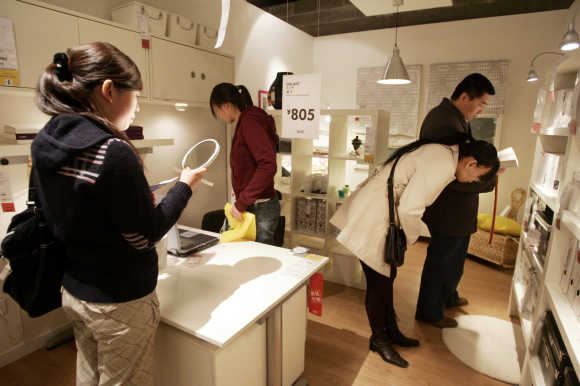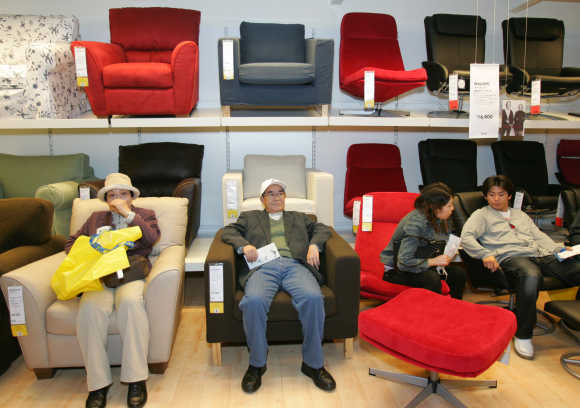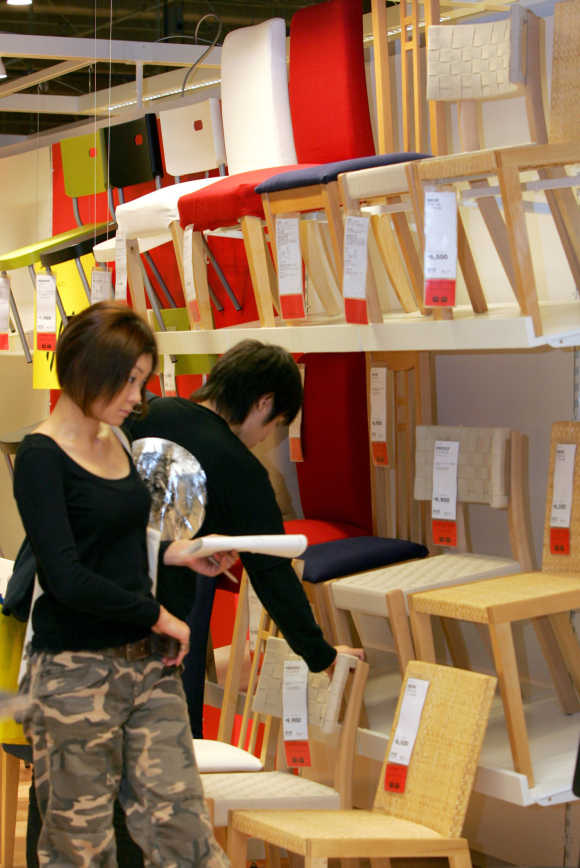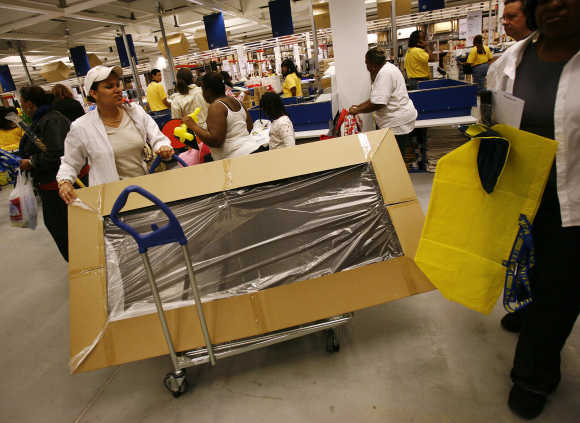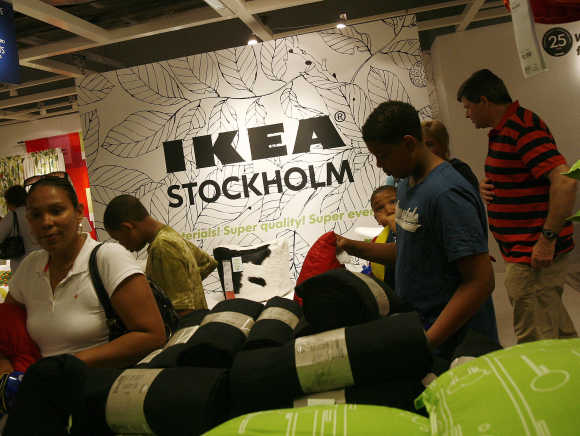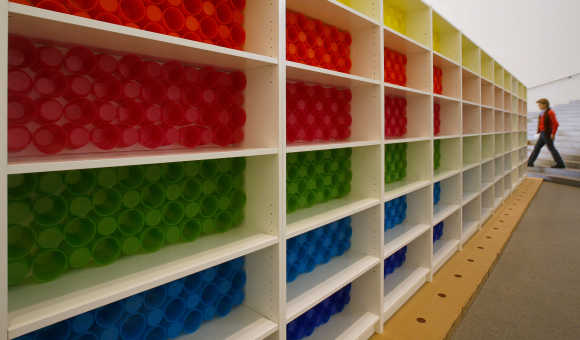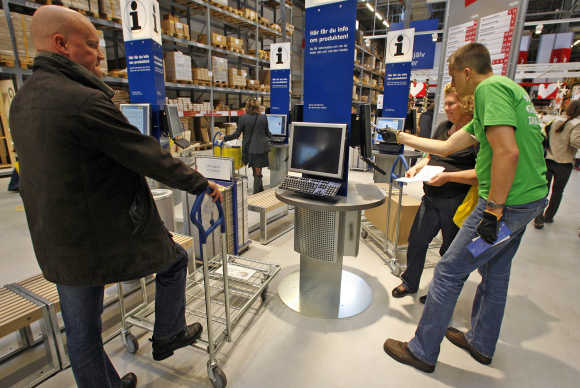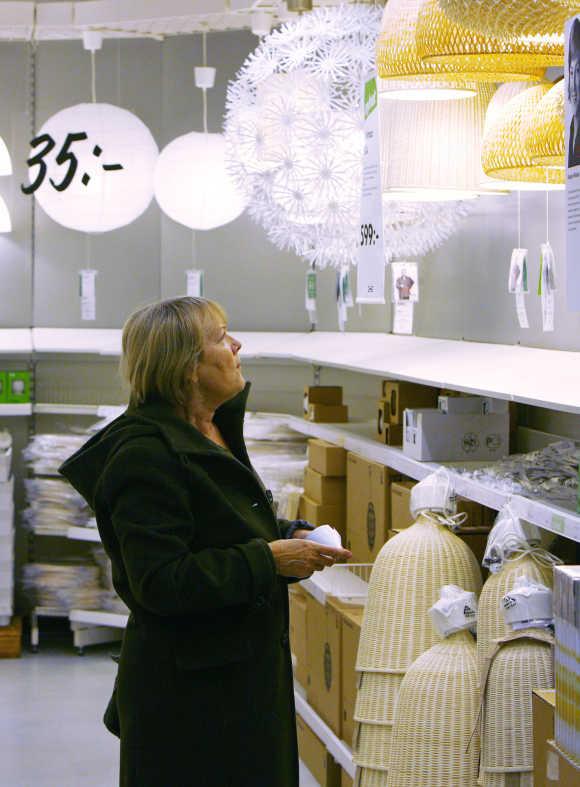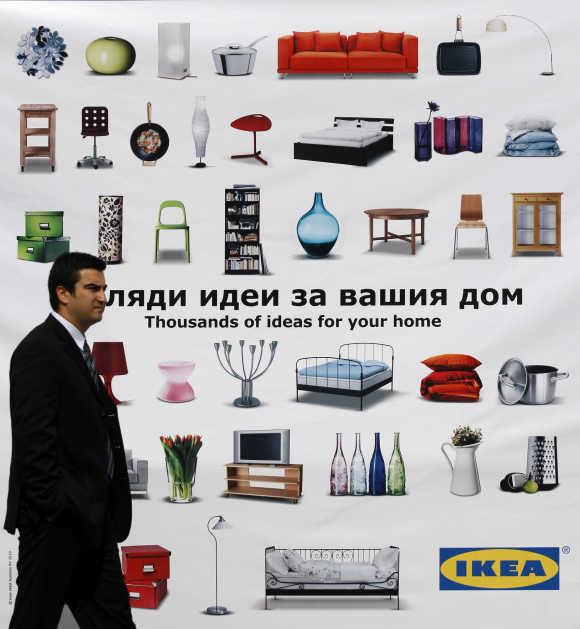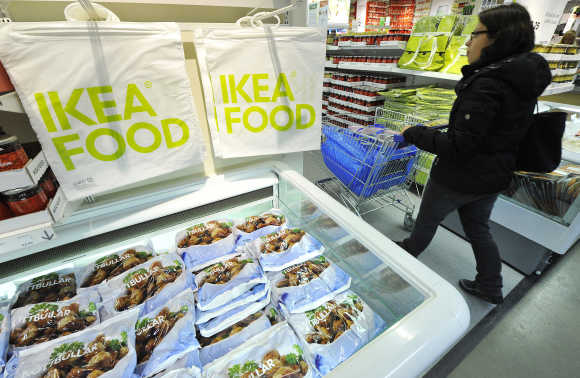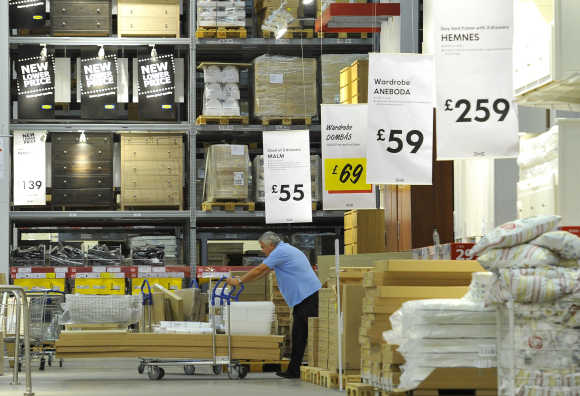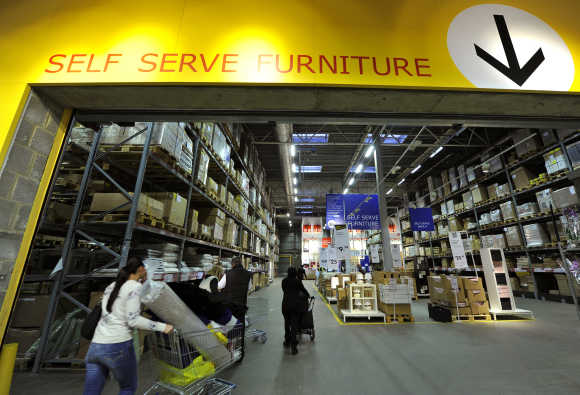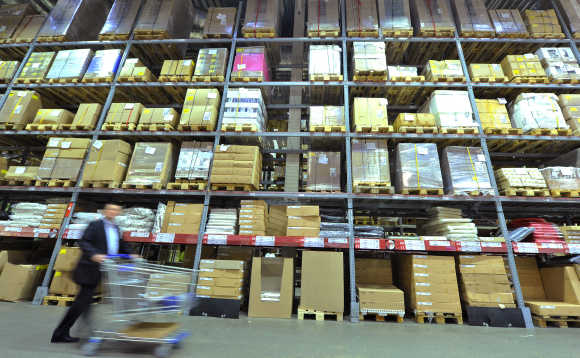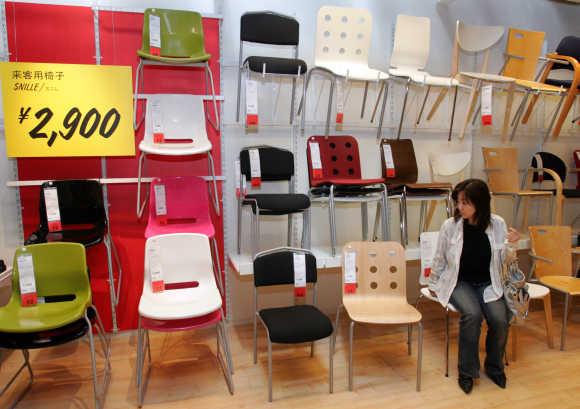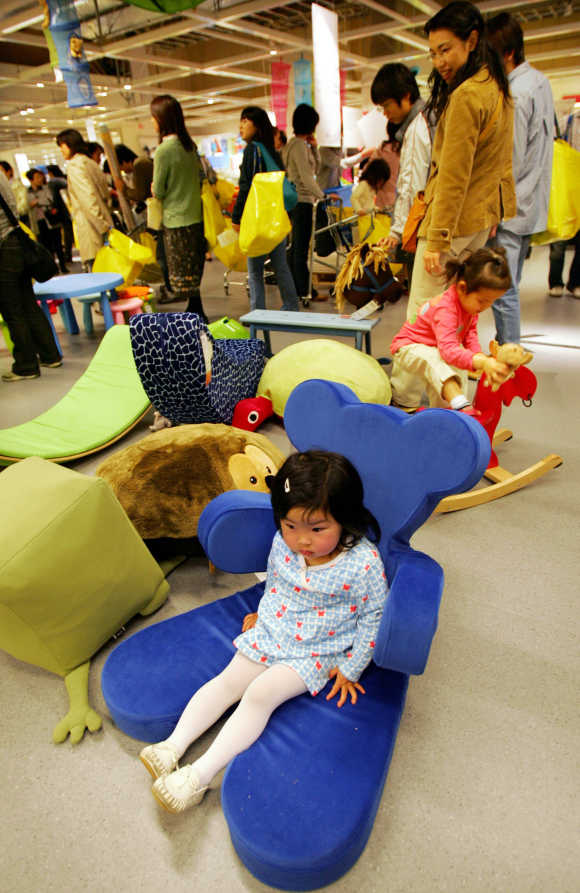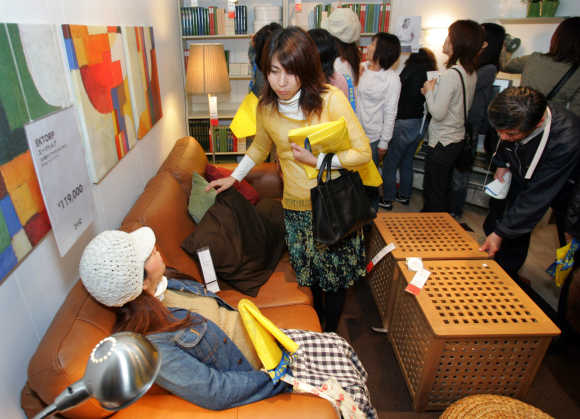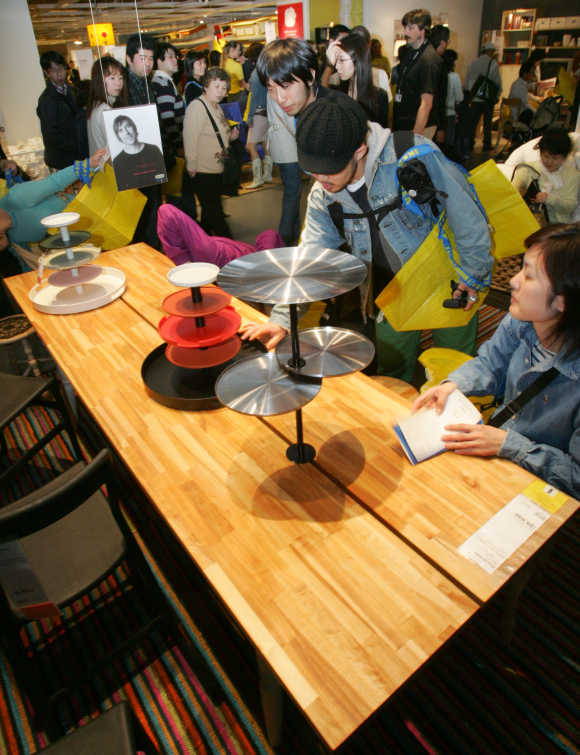 | « Back to article | Print this article |
Ikea: World's largest furniture retailer
Ikea is a privately held, international home products company that designs and sells ready-to-assemble furniture such as beds and desks, appliances and home accessories.
The company is the world's largest furniture retailer.
Click NEXT to read more...
Ikea: World's largest furniture retailer
Founded in 1943 by 17-year-old Ingvar Kamprad in Sweden, the company is named as an acronym comprising the initials of the founder's name (Ingvar Kamprad), the farm where he grew up (Elmtaryd), and his hometown (Agunnaryd, in Smaland, South Sweden).
Click NEXT to read more...
Ikea: World's largest furniture retailer
The firm is known for the attention it gives to cost control, operational details and continuous product development, allowing it to lower its prices by an average of two to three per cent over the decade to 2010, while continuing its global expansion.
Click NEXT to read more...
Ikea: World's largest furniture retailer
The groups of companies that form Ikea are all controlled by Ingka Holding, a Dutch corporation, which in turn is controlled by a tax-exempt, not-for-profit Dutch foundation.
The Ikea trademark and concept is controlled by a series of corporations that can be traced to the Netherlands Antilles and to the Interogo Foundation in Liechtenstein.
Click NEXT to read more...
Ikea: World's largest furniture retailer
Ingka Holding owns the industrial group Swedwood, which sources the manufacturing of Ikea furniture, the sales companies that run Ikea stores, as well as purchasing and supply functions, and Ikea of Sweden, which is responsible for the design and development of products in the Ikea range.
Click NEXT to read more...
Ikea: World's largest furniture retailer
Ingka Holding is wholly owned by Stichting Ingka Foundation, which is a non-profit foundation registered in Delft, Netherlands.
The European logistics centre is located in Dortmund, Germany, and the Asian logistics centre is located in Singapore.
Click NEXT to read more...
Ikea: World's largest furniture retailer
Inter Ikea Systems in Delft, also in the Netherlands, owns the Ikea concept and trademark, and there is a franchising agreement with every Ikea store in the world.
Click NEXT to read more...
Ikea: World's largest furniture retailer
The company which originated in Smaland, Sweden, distributes its products through its retail outlets. As of October 2011, Ikea had 332 stores in 38 countries.
In fiscal year 2010, it sold $23.1 billion worth of goods, a 7.7 per cent increase over 2009.
Click NEXT to read more...
Ikea: World's largest furniture retailer
On February 17, 2011, Ikea announced its plans for a wind farm in Dalarna County, Sweden, furthering the furniture giant's goal of running on 100 per cent renewable energy.
Click NEXT to read more...
Ikea: World's largest furniture retailer
The Ikea website contains about 12,000 products and is the closest representation of the entire Ikea range. There were over 470 million visitors to the Ikea websites in the year from September 2007 to September 2008.
Click NEXT to read more...
Ikea: World's largest furniture retailer
Ikea is the world's third-largest consumer of wood, behind The Home Depot and Lowe's.
Click NEXT to read more...
Ikea: World's largest furniture retailer
The first Mobel-Ikea store was opened in Almhult, Smaland in 1953, while the first stores outside Sweden were opened in Norway (1963) and Denmark (1969).
Click NEXT to read more...
Ikea: World's largest furniture retailer
The stores spread to other parts of Europe in the 1970s, with the first store outside Scandinavia opening in Switzerland (1973), followed by Germany (1974).
Click NEXT to read more...
Ikea: World's largest furniture retailer
Things were going so well for the company, that in 1973, the company's German executives accidentally opened a store in Konstanz when they had meant to open one in Koblenz.
Later that decade, stores opened in other parts of the world, including Japan (1974), Australia and Hong Kong (1975), Canada (1976) and Singapore (1978).
Click NEXT to read more...
Ikea: World's largest furniture retailer
Ikea further expanded in the 1980s, opening stores in France and Spain (1981), Belgium (1984), the United States (1985), the United Kingdom (1987), and Italy (1989), among other areas.
Click NEXT to read more...
Ikea: World's largest furniture retailer
The company expanded into more countries in the 1990s and 2000s. Germany, with 44 stores, is Ikea's biggest market, followed by the United States, with 37.
At the end of 2009 financial year, the Ikea group had 267 stores in 25 countries.
Click NEXT to read more...
Ikea: World's largest furniture retailer
The first Ikea store in Latin America opened on February 17, 2010, in Santo Domingo, Dominican Republic.
Click NEXT to read more...
Ikea: World's largest furniture retailer
The biggest store in the Southern Hemisphere is in Tempe, Sydney, Australia. Ikea opened its largest store in Ottawa, Canada, on December 7, 2011.
In 2012, Ikea plans to open its first shopping centre in Croatia that will be one of the five biggest in Europe and among 10 biggest Ikea stores in the world.
In 2013, it plans to open its first shopping centre in Vilnius, Lithuania, that will be the biggest furniture-selling mall in Baltic states.
Click NEXT to read more...
Ikea: World's largest furniture retailer
Older Ikea stores are usually very large blue buildings with yellow accents (also Sweden's national colours) and few windows.
They are often designed in a one-way layout, leading customers along what Ikea calls "the long natural way" designed to encourage the customer to see the store in its entirety (as opposed to a traditional retail store, which allows a consumer to go directly to the section where the goods and services needed are displayed).
Click NEXT to read more...
Ikea: World's largest furniture retailer
Newer Ikea stores, like the one in Monchengladbach, Germany, make more use of glass, both for aesthetics and functionality.
Skylights are also now common in the self-serve warehouses; natural lighting reduces energy costs, improves worker morale and gives a better impression of the product.
Click NEXT to read more...
Ikea: World's largest furniture retailer
The sequence first involves going through furniture showrooms making note of selected items. The customer then collects a shopping cart and proceeds to an open-shelf "Market Hall" warehouse for smaller items, then visiting the "Self Serve" furniture warehouse to collect previously noted showroom products in flat pack form.
Click NEXT to read more...
Ikea: World's largest furniture retailer
Today, most stores follow the same layout of having the showroom upstairs with the marketplace and warehouse downstairs.
Some stores are single level, while others have separate warehouses to allow more stock to be kept on-site.
Click NEXT to read more...
Ikea: World's largest furniture retailer
Single-level stores are found predominantly in areas where the cost of land would be less than the cost of building a two-level store, such as the Saarlouis, Germany and Haparanda, Sweden locations.
Some stores have dual-level warehouses with machine-controlled silos to allow large quantities of stock to be accessed throughout the selling day.
Click NEXT to read more...
Ikea: World's largest furniture retailer
Most Ikea stores offer an "as-is" area at the end of the warehouse, just before the cash registers. Returned, damaged and formerly showcased products are displayed here and sold with a significant discount, but also with a "no-returns" policy.
Click NEXT to read more...
Ikea: World's largest furniture retailer
Most Ikea stores communicate the Ikea policy on environmental issues in the "as-is". In the United Kingdom, this is referred to as "Bargain Corner".

